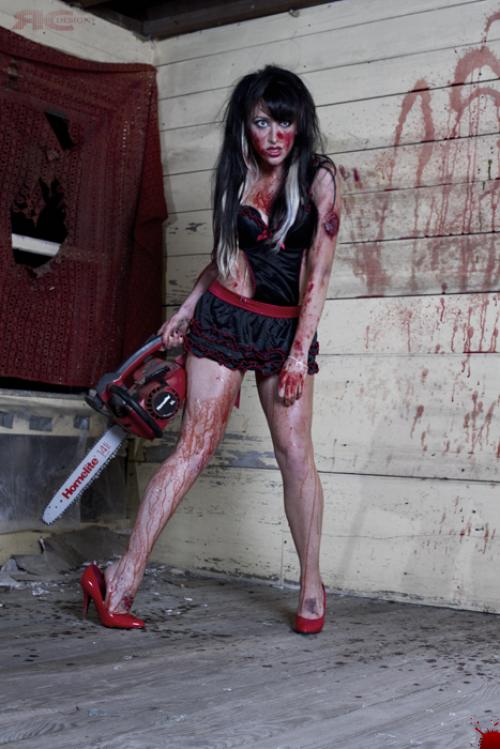Here we are, at OMG It’s Fucking Monday Already:

So to brighten things up, a little humor:









And speaking of impregnation, a little pictorial motivation to get you wanking working:




Just be careful out there:


Here we are, at OMG It’s Fucking Monday Already:

So to brighten things up, a little humor:









And speaking of impregnation, a little pictorial motivation to get you wanking working:




Just be careful out there:

When I first saw the headline to this article, my immediate reaction was: “Seriously?”
7 Great Lever-Action Rifles
Lever-action rifles have been with us since the 19th century, and despite this age of AR-15s and precision-bolt rifles, the lever-action rifle still has its place.
…and in other news, the Marines have stormed Belleau Wood.
But let’s not get all judgey here, thinks I; maybe there’s something new to see.

That’s the Uberti 1886 Hunter Lite, in .45-70 Govt. And I swear, the sight of it makes my dangly rather less dangly, if you get my drift. What’s next?

Great Davy Crockett’s bleeding hemorroids, that’s uglier than Hillary Clinton after a 3-night tequila bender. Ugh. Let’s get away from the Mossberg Anorexia 464 SPX in .30-30, and look at something else.

Okay, this Marlin 1894 CSBL in .357 Mag is much easier on the eye, even with the Picatinny rail slapped on top of it like an elongated carbuncle. (I know, I know; all the cool kids love a rail mount these days because then they can put red-dot geegaws and such on the rifle — and the length of the rail means you can also go all Jeff Cooper and turn it into a “Scout”-type rifle if you’re of that persuasion.) What’s #4?

This is, as the article suggests, Winchester’s reward to you for having bought “standard” lever rifles your whole life. It’s the Model 94 Deluxe in .30-30, and it’s so pretty I want to take it out on a date. In the deep woods. With a deer somewhere in the neighborhood.

I’ve always liked the .22 LR Browning BL-22, and this “Midas Micro” model is just lovely to look at. Give me a moment to write this one down on my Santa list, and then we can move on.

This Rossi R92 shoots the very manly .454 Casull monster cartridge, and this means that if you’re a devotee of the cartridge — and many are — you’ve got a decent companion piece for your Freedom Arms revolver. And finally:

What is it with this trend towards the fake-brass look of Cerakote, as practiced by the Pedersoli 86/71 Boarbuster Mark II in either .444 Marlin (a hotter .44 Rem Mag) or .45-70 Govt? The blurb states that it’s based on the old Winchester Mod 71. Okay. And of course, this rifle sports an adjustable plastic stock and the Picaninnytinny rail, making it very trendy. All fine and good; I’m just not in the target market.
I guess that some of these rifles are an attempt to chase after the “youth” (i.e. well under my vintage) market, which is fine, I suppose, because the next generation has different tastes from me and mine. But what that also means is that older models, long beloved by shooters, are going to be “phased out” because they can’t afford to make both kinds of guns. We’ve already seen this with the demise of the excellent Winchester 9422 rimfire lever rifle, and you heard it here first: the “standard” Model 94 and its ilk will likewise disappear in the near future — only the above-mentioned “Deluxe” (i.e. more expensive) models will remain on the production line.
All the above rifles, good, bad and fugly, are too damn expensive, as you will see when you follow the link. I don’t mean too expensive for a rifle; I mean too expensive for a lever-action rifle. The old warhorses are not thoroughbreds, they’re pit ponies and cart horses; and if these seven rifles are anything to go by, I for one don’t like what I’m seeing here. Only the Rossi still looks like and costs about the same as a traditional lever rifle should — and it’s made in Brazil.
Take from that what you will.
Everyone, and I mean everyone should watch Nicholas & Alexandra on Amazon Prime tonight. While the movie takes a few historical liberties, it nevertheless provides a chilling, and very timely warning of the consequences of revolution.
Most poignant is towards the end of the movie, where an accurate portrayal is given of the transfer of power from police to party functionaries, who do not need the law to function: just an order from the local soviet.
I forgot to mention earlier that tomorrow, June 13, is World Gin Day.
I’ll need an extra bottle or two of Sipsmith, methinks, so it’s off to Ye Olde Liqueure Shoppe I go.





As NYFC seems to be about to crash and burn, and given that the situation seems to be echoing in other large, similarly-Democrat-governed cities and states around the country, it raises rather an interesting discussion point.
Should the federal government even get involved? (That explains the hidden Nero reference in the title, by the way.)
In the first instance, we all know that as a federal republic, the states have a great deal of autonomy when it comes to various policy initiatives and experiments — the famed laboratories of democracy of which USSC Judge Louis Brandeis once spoke. Logically speaking (I know, I know), should a state like New York have no problem with abolishing the NYPD, should it not be regarded as such an experiment? Ditto Seattle, where Pantifa seems to have created an enclave within the city and declared it a Soviet collective or something. In both cases, the attitude of these states’ respective governors is best characterized by a “boys will be boys” laissez-faire response.
My question is: in the absence of any state action, is there a compelling reason for the federal government to step in and end such experiments?
I’m not sure there is. And yes, there’s a certain degree of Schadenfreude involved, in that I know that this foolishness will end in tears; but at the same time, I also have a kind of Let Africa Sink attitude towards the whole thing — as long as when the cities implode, the federal government is not expected to be part of either the deconstruction of said stupidity, nor the mini-Marshall Plan that will be required to rebuild the fools’ paradises.
The question arising from the above, therefore, is: as the nation’s economy has greatly decentralized away from the large urban centers, are cities still that important to our country? Strip away the romantic public relations veneer, and I think we can find that they aren’t.
Take Wall Street, for example. With the growth of the Internet and the ability to conduct stock trades remotely, i.e. away from the actual floor of the NYSE, I can think of no compelling reason why the stock exchange should occupy any real estate at all. The importance of New York as a financial center is not what it was, say, in the 20th century, and if the Wuhan virus has taught us anything, it is the degree to which the Internet has taken away the need for such centralization.
I know, it sucks for those fools wealthy people who plonked down $5 million for that 2BD 2BA condo on the Upper West Side, and who would have to pull up the drawbridges against hordes of rampaging looters every night; but quite frankly, I don’t think there’s going to be a great deal of sympathy for these people in the population at large — even though The Donald is one of those same people. (His hotels, for one thing, are going to go under in such a scenario, but the vagaries of fortune of overpriced urban real estate investments are not, as a rule, the concern of suburbanites and country folk in Ohio, Missouri or Utah.)
So, to quote a one-time quasi-revolutionary: “You say you want a revolution?” Go ahead, have fun. Just don’t expect taxpayers from Texas, South Dakota or Arizona to bail you out when it all goes pear-shaped; because while you’re screwing around with anarcho-socialist communes (which have always — always — failed in the past), we Deplorables in Flyover Country will be too busy making America great again to have the time or money to waste on helping you out. And contrary to your expectations, American greatness does not depend solely on places like Seattle or NYFC anymore.

Your suggestions in Comments.